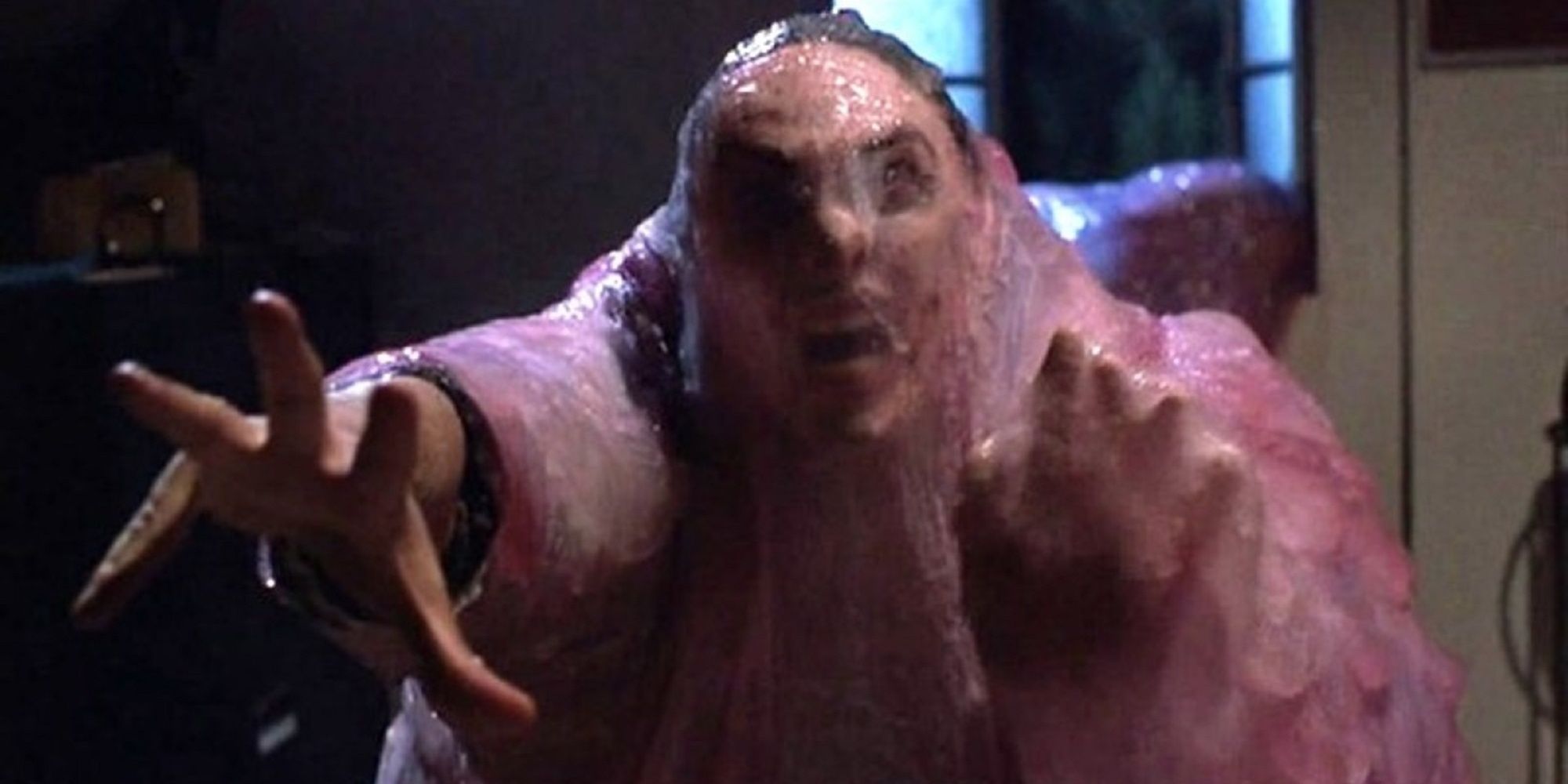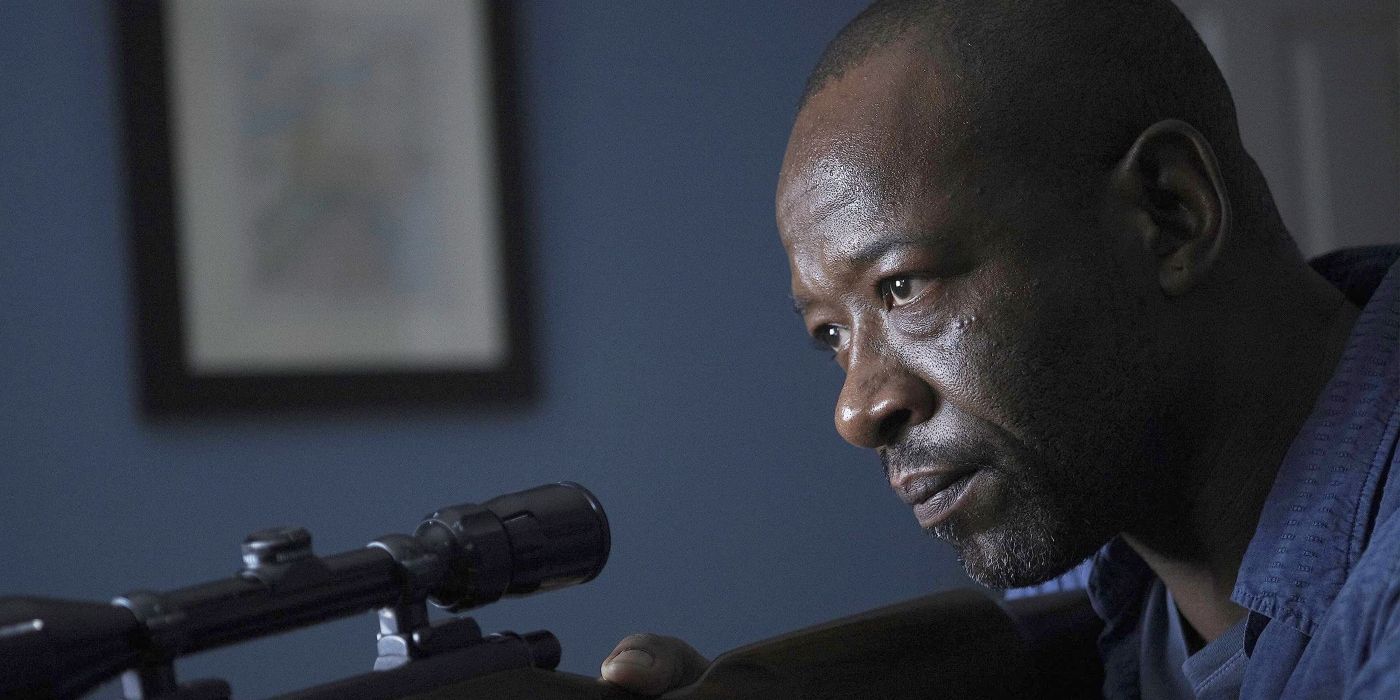After over a decade on TV, ‘The Walking Dead’s best episode is still its first.
Has The Walking Dead ever produced a more iconic image than Rick Grimes (Andrew Lincoln) riding into an abandoned Atlanta via an empty highway? It’s a wonderfully bleak shot that establishes the tone flawlessly, and its reputation has spread so far that even people who have never watched the show can recognize it. Seemingly, AMC also realized its power considering how much they slapped it on every piece of marketing for the show’s first season – a season that, in retrospect, feels like it belongs to an entirely different show. There was a time when The Walking Dead was labeled with the dubious (but still highly desirable) term “prestige television”, and talked about in the same way as fellow AMC shows like Breaking Bad and Mad Men. But those days faded from memory long ago, leaving The Walking Dead to stumble to a conclusion. By the time it finally concluded with Season 11’s underwhelming “Rest in Peace,” you’d be hard-pressed to find a fan who wouldn’t admit that the show had passed its prime a decade prior.
But The Walking Dead didn’t always exist as a vehicle to create what feels like an infinite number of spin-offs. (The most recent one, The Walking Dead: The Ones Who Live, reuniting us with Rick and Michonne (Danai Gurira) after they spent years apart.) Season 1 was the only season where Frank Darabont served as showrunner, and was also the only one produced before AMC infamously slashed the budget even while demanding more content. As a result, Season 1 feels like a true cinematic spectacle in a way future seasons didn’t, telling an intimate story about nuanced characters that simultaneously reached for the big screen at every opportunity thanks to an excellent level of technical proficiency. It’s fascinating to return to, and its genius was cemented in its very first episode.
‘The Walking Dead’s Pilot Shows Immense Restraint
Rather than flooding the episode with action and overblown theatrics, Darabont – in what would also be his only directing credit for the show – keeps things simple. Very little happens from a plot perspective (the consequence of Darabont taking his original script, cutting it in two, and then embellishing both halves to deliberately keep the pace down), but from a character standpoint, we’re given plenty. Future episodes would play into the ensemble nature of the show (cutting between multiple storylines with dozens of characters that can occasionally feel a tad disparate) but “Days Gone Bye” does not follow this approach. Instead, the camera barely leaves Rick’s perspective, creating an attachment between him and the audience the show would never replicate again. By keeping auxiliary material to a minimum, Darabont turns the episode into an excellent (and often dialogue-free) character piece that wonderfully sets the stage for the following episodes.
Rick Grimes is a refreshing protagonist for a show like this. On the one hand, he’s a police officer with extensive knowledge of weapons and survival techniques, but he’s also a recently comatose man who still hasn’t recovered from his injury. His backstory establishes him as a man who lives according to a strict code of ethics, but suddenly he’s in a world where such things no longer apply, resulting in a compelling dynamic where he’s simultaneously the best and worst prepared person for a zombie outbreak. The decision to thrust him headfirst into the apocalypse after waking up from a coma is the smartest decision Darabont made. Not only does it allow him to jump straight to what we’re all here for, but it also makes Rick an ideal audience surrogate. He spends most of “Days Gone Bye” wondering just what the hell happened while he was gone, piecing together the fragments of his missing months at the same rate we do. There’s a reason Rick continued to entice viewers even after the show’s decline, and it’s impressive how much Darabont and Lincoln were able to get right with his first appearance.
Frank Darabont Has a Long Horror History

Frank Darabont may be famous for directing The Shawshank Redemption and The Green Mile, but he got his break as a horror writer, contributing to the scripts for A Nightmare on Elm Street 3 and The Blob. With “Days Gone Bye,” that lineage is on full display. There are multiple scenes vying for the title of the scariest Walking Dead moment here. One of the lead contenders is the hospital scene, a sequence that manages to turn ten minutes of someone walking through corridors into a masterclass in creating atmosphere and tension. Sure, seeing a cafeteria door with “Don’t Open, Dead Inside,” scrawled across it is a bit of a giveaway, but it’s the subtleties that sell the moment. The wilted flowers, the broken clock, the flickering light at the end of the hallway… things that would be of no concern in isolation, but together they paint an entirely different mood. Even before Rick leaves his room, it’s clear that something is very wrong, and watching him gradually piece that realization together is devastating to watch.
What follows is the perfect representation of waking up in a nightmare. Every step Rick takes plunges him further into the pits of hell – a sentiment that proves strangely accurate when he has to descend a pitch-black stairway with only a pack of matches to light his way. It’s a nerve-racking encounter, guaranteed to get your heart pounding in anticipation of the inevitable jump scare, but Darabont doesn’t resort to such cheap tricks. Instead, he lets the audience’s imagination do the work for him, a trick that a century’s worth of horror films has continually proved to be the most terrifying thing in the world. When Darabont does unleash a haunting visual, he waits until we’re in the comfort of day, tricking us into believing we’ve escaped the worst. As the glare of the afternoon sun fades away, Rick peers out over this strange new world to see row after row of body bags strewn across the parking lot. He gazes at them, making no attempt to hide his tears, then staggers off in the vague direction of his house. It’s only right that Darabont ends such a disturbing sequence on its most disturbing sight, bringing it to a fitting conclusion that flawlessly sets the tone for the remainder of the episode.
Even putting this scene aside, it’s impressive how many memorable set pieces Darabont fits into such a short runtime without ever feeling overstuffed. At times, “Days Gone Bye” has the feel of a “greatest hits” collection, cramming every zombie-related idea Darabont has into one script with no regard for how that would impact future episodes. One minute Rick’s lamenting the state of things after discovering a couple who died by suicide in their farmhouse, and the next he’s fighting off a horde of zombies while trapped beneath a tank. Even the in medias res opening, a delightfully creepy sequence where Rick encounters a zombified little girl in the midst of a deserted highway, has become a frequently referenced part of horror culture. The silence is what makes it. Rick’s search through the metallic graveyard is made so much creepier by his footsteps being the only sound for miles around, and it’s amazing that the simple addition of a second pair can elicit such immediate fear. It’s the calm before the storm, and peace has never felt so ominous.
Morgan Brings Out Rick’s Worst Fear

Rick doesn’t cross paths with many living people in “Days Gone Bye,” but the exception to this is Morgan (Lennie James), a character who solidifies the episode’s brilliance. When we meet him, he’s living in a rundown house in Rick’s old neighborhood. “This place, Fred and Cindy Drake’s,” says a shell-shocked Rick as he hobbles around the ruined living room. “It was empty when we got here,” replies Morgan, a cold statement that says more than enough. Whatever it once was is irrelevant, as now it’s a haven for him and his son Duane (Adrian Kali Turner). (His knowledge of the outside world proves invaluable as he shepherds Rick through this hellish landscape.) When Rick asks why he hasn’t moved on, he’s coy with his reasons, but the eventual reveal becomes the episode’s most devastating moment. His wife has turned, and now she’s roaming the streets outside the house as a living symbol of his failure. Morgan’s secret is Rick’s worst fear, and this revelation is all he needs to resume his search for his family. They part with the promise that they will reunite. It’s unclear if either of them thinks that will happen, but hope is there, and they could both do with a bit of hope right now.
The following scene is among the best of Darabont’s career. Tormented by his past too long, Morgan takes up a rifle and attempts to put his wife out of her misery… but he can’t do it. Instead, he just breaks down in tears. It’s heartbreaking to watch, and serves to highlight just how distressing a zombie outbreak would be. These are not mindless killers who exist solely as target practice for the living, but little pockets of tragedy who all have their own story to tell. Darabont intercuts Morgan’s ordeal with footage of Rick confronting a legless zombie on his way out of town. Rick mourns what has happened to her, once again failing to hide those tears, then fires a single bullet through her head to give her a modicum of peace. The juxtaposition between the two scenes is phenomenal (aided by the best piece of music Bear McCreary composed for the series), and together they give the impression of a show that would never allow simplistic thrills to overshadow the inherent human misery of such a scenario. Even after another 176 episodes, The Walking Dead would never again produce such an artfully constructed moment.
Returning to “Days Gone Bye” is a strange experience. There are times when it feels akin to reading a novel where the original author was quietly removed somewhere around the second chapter, and that’s not a stone’s throw from the truth. Darabont’s firing during Season 2 is a blow The Walking Dead never fully recovered from, and while we could spend hours speculating about how different things would have been had he stuck around, we should be thankful we got what we did. All of Season 1 is worth a watch, but there’s no question that “Days Gone Bye” is the standout. It’s a shame The Walking Dead peaked with its opening, but then again, that’s also a testament to the episode’s quality. It truly is one of the great TV pilots, and for those seeking a pristine zombie experience that favors human drama over mindless mayhem, it’s hard to recommend anything better.




